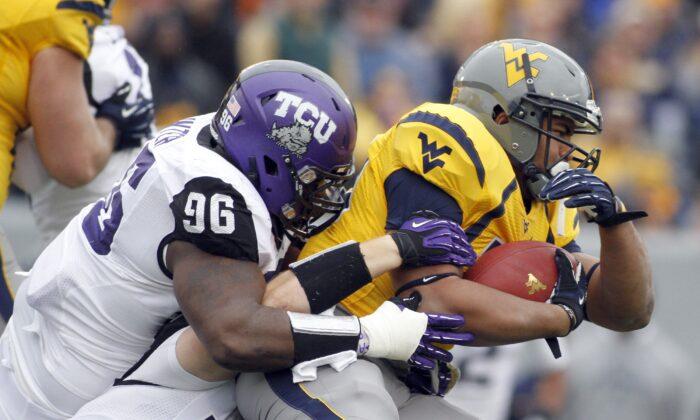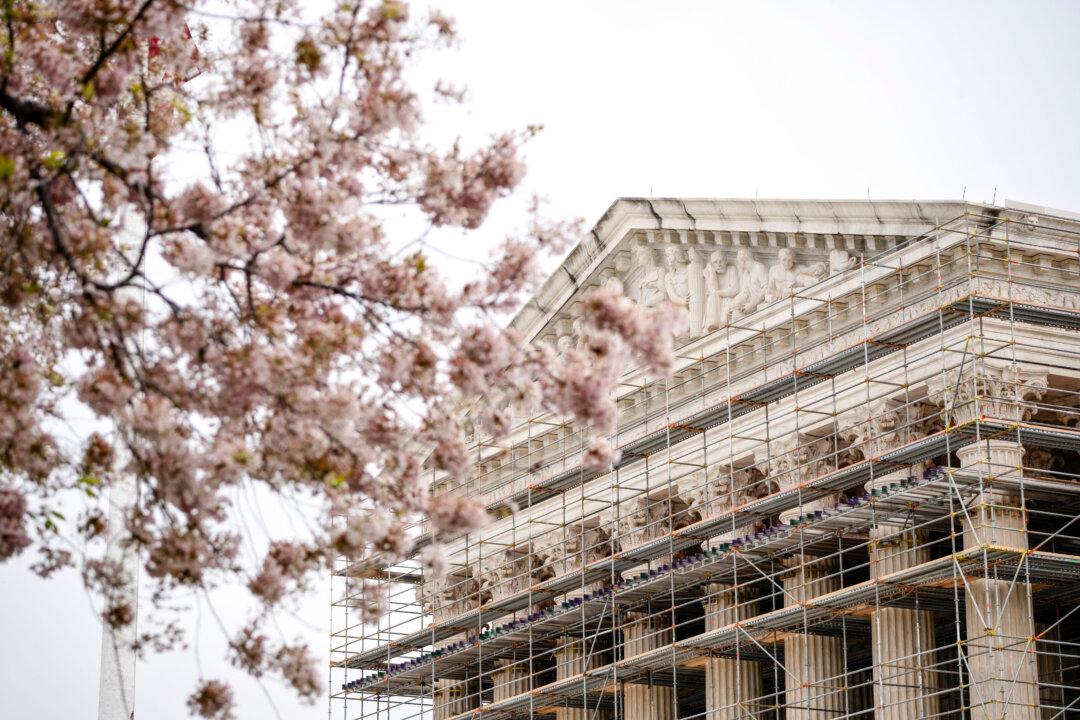The Supreme Court ruled unanimously that the National Collegiate Athletic Association’s (NCAA) regulations that restrict benefits that may be given to student-athletes violate federal antitrust law.
The June 21 ruling, which opens the door for student-athletes to receive greater compensation, could reshape college sports throughout the country.
The case is actually two cases that were heard together: NCAA v. Alston, court file 20-512, and American Athletic Conference (AAC) v. Alston, court file 20-520. Former football player Shawne Alston, one of a group of football and basketball athletes challenging the NCAA, was a running back for the West Virginia University Mountaineers from 2009 to 2012.
The Biden administration sided with the student-athletes during telephonic oral arguments on March 31.
For years, college football has been among the most popular spectator sports in the United States. Top schools earn tens of millions of dollars in annual revenue. The work of college athletes isn’t paid, although schools have been allowed to give players non-monetary compensation such as athletic scholarships that cover the cost of books, housing, and tuition.
In their brief, the athletes criticized “the profound inequity of a system that enables conference executives, athletic directors, coaches, schools, television networks, and a host of others to make billions of dollars on the backs of young, often underprivileged players.”
The high court rejected the NCAA’s argument that it should enjoy antitrust immunity and affirmed a lower court’s order that will allow member schools to offer more education-related benefits to student-athletes.
Gorsuch recounted that the trial court “issued a 50-page opinion that cuts both ways” after “amassing a vast record and conducting an exhaustive trial.”
The trial court carefully reviewed the NCAA’s arguments but was not convinced the organization deserved to be exempted from antitrust laws, he wrote.
Although U.S. District Judge Claudia Wilken of California “refused to disturb the NCAA’s rules limiting undergraduate athletic scholarships and other compensation related to athletic performance,” she struck down “NCAA rules limiting the education-related benefits schools may offer student-athletes—such as rules that prohibit schools from offering graduate or vocational school scholarships.”
Wilken found that the NCAA and its member schools have the “power to restrain student-athlete compensation in any way and at any time they wish, without any meaningful risk of diminishing their market dominance.” These compensation limits “produce significant anticompetitive effects in the relevant market.”
Even though member schools “compete fiercely in recruiting student-athletes, the NCAA uses its monopsony power to ‘cap artificially the compensation offered to recruits,’” Gorsuch wrote, quoting Wilken.
A monopsony is a market situation in which there is only one buyer.
During oral arguments in March, the attorney for the student-athletes, Jeffrey L. Kessler, said: “The naked horizontal monopsony restraints that the competing NCAA schools have adopted in these labor markets would be per se unlawful in any other context.
But in three cases over that period, the “court struck down the restraints ... and history has proven the courts were correct. Demand for college sports has continued to flourish,” Kessler said.
In the new ruling, Gorsuch again quoted Wilken, writing that if the NCAA’s restraints were removed, competition among schools would increase and student-athletes “would receive offers that would more closely match the value of their athletic services.”
Gorsuch commended the trial court for a job well done.
“Courts reviewing complex business arrangements should, in other words, be wary about invitations to ‘set sail on a sea of doubt,’” the justice wrote, citing a court ruling from 1898.
“But we do not believe the district court fell prey to that temptation. Its judgment does not float on a sea of doubt but stands on firm ground—an exhaustive factual record, a thoughtful legal analysis consistent with established antitrust principles, and a healthy dose of judicial humility.”
The U.S. Court of Appeals for the 9th Circuit affirmed Wilken’s ruling.
Justice Kavanaugh took a harder line in his concurring opinion, noting that the NCAA “has long restricted the compensation and benefits that student athletes may receive” and “has long shielded its compensation rules from ordinary antitrust scrutiny” with “surprising success.”
“The Court’s decision marks an important and overdue course correction,” he wrote.
Years ago, the NCAA decided “to build a massive money-raising enterprise on the backs of student athletes who are not fairly compensated,” Kavanaugh wrote.
“The NCAA couches its arguments for not paying student athletes in innocuous labels. But the labels cannot disguise the reality: The NCAA’s business model would be flatly illegal in almost any other industry in America. All of the restaurants in a region cannot come together to cut cooks’ wages on the theory that ‘customers prefer’ to eat food from low-paid cooks. ... Movie studios cannot collude to slash benefits to camera crews to kindle a ‘spirit of amateurism’ in Hollywood,” the justice wrote.
“Nowhere else in America can businesses get away with agreeing not to pay their workers a fair market rate on the theory that their product is defined by not paying their workers a fair market rate. And under ordinary principles of antitrust law, it is not evident why college sports should be any different. The NCAA is not above the law.”
“Hopefully, it will be the major next step on the road to a true fair competitive system for these athletes,” he said.
NCAA President Mark Emmert accepted the ruling, saying the organization “remains committed to working with Congress to chart a path forward, which is a point the Supreme Court expressly stated in its ruling.”





